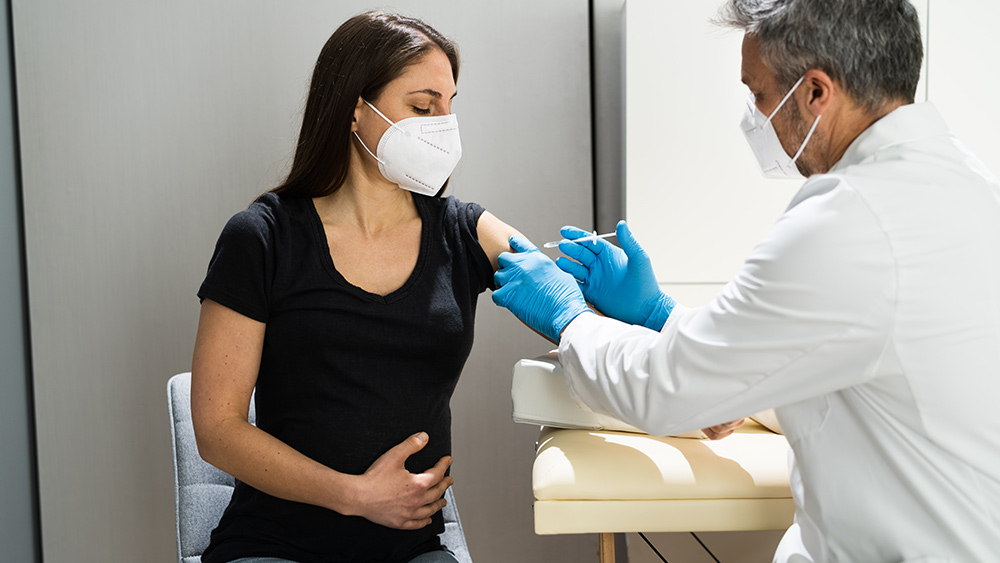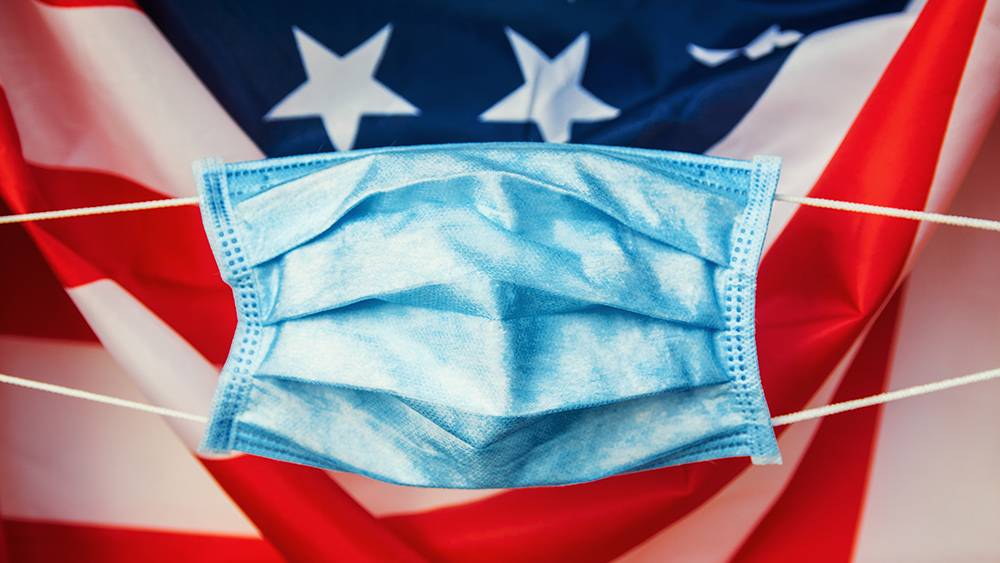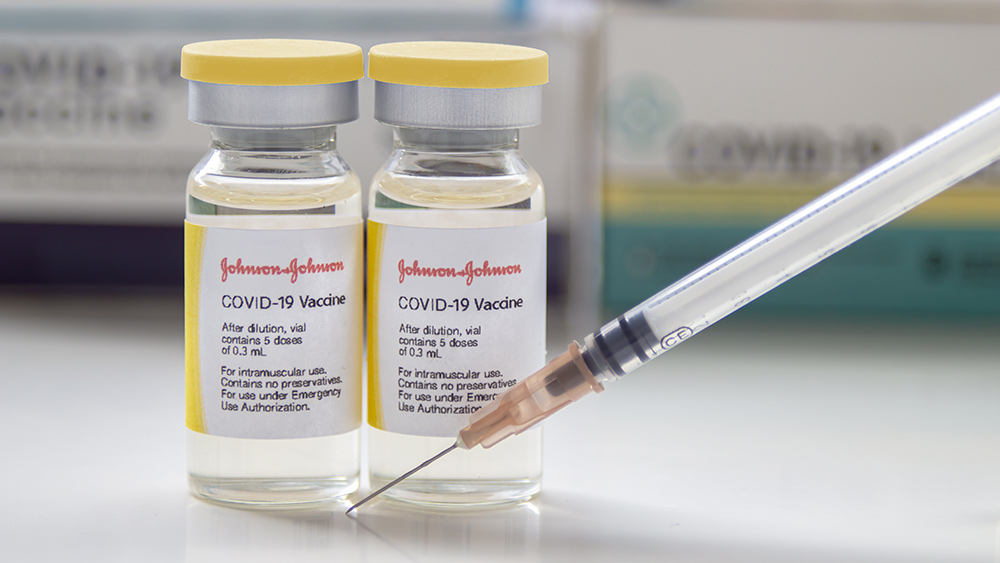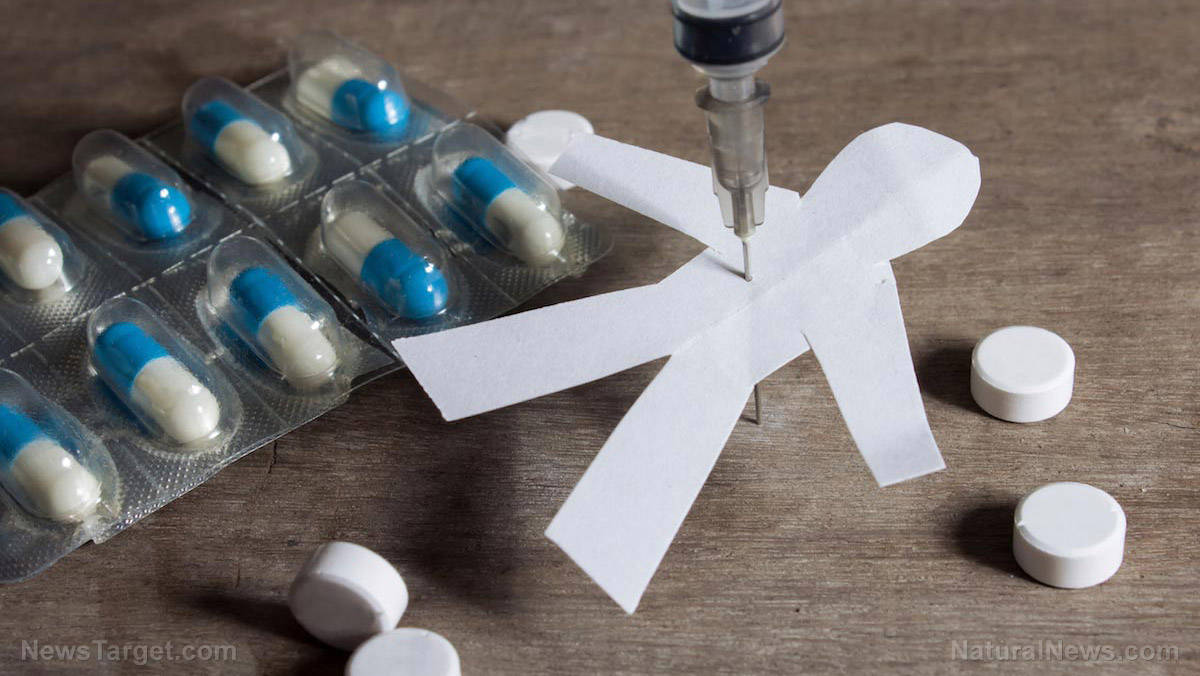Think the FDA is looking out for your health? History tells a different story.
10/09/2021 / By News Editors
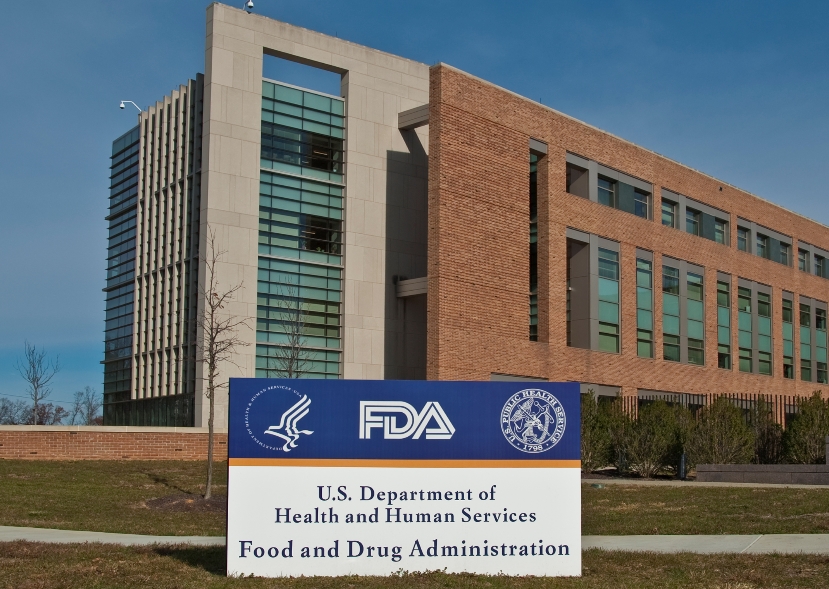
Regulatory agencies, says Encyclopedia Britannica, are a uniquely American institution. Though conceptualized as mere advisory bodies at the time of their emergence in the late 19th century, federal regulatory agencies have since acquired comprehensive legislative powers and even quasi-judicial powers — exercising “social control through rulemaking” with “almost no supervision by other branches of government.”
(Article republished from ChildrensHealthDefense.org)
As legal scholars tamely explain, “unique pressures and influences … invariably push [regulators’] actions, and their decisions on policy questions, in a direction favored by regulated firms.”
This phenomenon, known as regulatory capture, has become the norm — not least because lucrative “revolving door” jobs generally await tractable regulators once they exit their government posts.
In the crowded field of captured agencies, the U.S. Food and Drug Administration (FDA) is one of the standouts. FDA gets 45% of its budget from the pharmaceutical industry, and fast-tracks more than 50% of the drugs it approves.
Consumer watchdog groups accuse the FDA of having evolved from a “hard-charging tiger of an agency” a century ago, to a “pliant pussycat” today.
FDA states that drug recalls are initiated either “by FDA request” or “on a company’s own initiative.” According to the consumer website Drugwatch, however, FDA “can only recommend” but not force a recall.
Vaccine recalls, too, are “almost always initiated voluntarily by the vaccine manufacturer.” In 1976, public outcry forced the government to pull the plug on a dangerous swine flu vaccine after just 10 weeks, but only after 40 million Americans had received it.
Although manufacturers do withdraw dangerous drugs, vaccines and consumer products from the market from time to time (sometimes after FDA has obligingly looked the other way for decades), many observers believe such recalls represent the tip of the iceberg — a placatory bone thrown to persuade the public that the nation has a functional oversight system.
Is the FDA at least scrupulous about which drugs and vaccines it lets out of the starting gate?
As a long line of drug fiascoes suggests, the clear answer is no — experimental COVID vaccines are the latest example.
The still timely tale of thalidomide
Thalidomide never received FDA approval, but the saga illustrates how, even 60 years ago, the FDA had already cast its lot with industry.
In the late 1950s, German firm Chemie Grünenthal (now Grünenthal) developed thalidomide with the help of former Nazi scientists (including Hitler’s IG Farben adviser on chemical warfare), promoting the drug for nausea and other discomforts of pregnancy.
In some countries, thalidomide was an ingredient in children’s cough syrups. Chemie Grünenthal sold thalidomide in 46 countries for five years before admitting the drug posed risks of severe birth defects, including missing or deformed limbs and injuries to major organs.
In the U.S., Chemie Grünenthal gave two pharmaceutical giants (companies that dominate the American market to this day) permission to manufacture thalidomide: first Smith Kline & French (now GlaxoSmithKline) and then Richardson-Merrell (now Sanofi).
Richardson-Merrell expected smooth regulatory sailing, but after it ignored repeated requests for pregnancy safety data from Dr. Frances Kelsey — a newly minted FDA employee with untarnished integrity — Kelsey “took a bold stance against inadequate testing and corporate pressure” and refused to approve thalidomide’s U.S. release.
Mistakenly confident that “corporate pressure” would eventually bear fruit, the company went ahead and distributed, “in an uncontrolled fashion,” more than 2.5 million doses of thalidomide to 20,000 pregnant women under cover of “clinical trials.”
When Kelsey still would not approve the drug, the company was forced to give up, but threatened to sue Kelsey after she tried to track down thalidomide babies. Neither the FDA nor the U.S. attorney backed up Kelsey.
In 1962, President John F. Kennedy shone a light on Kelsey’s efforts by giving her a President’s Award for Distinguished Federal Civilian Service. Even so, thalidomide survivors allege the FDA and Richardson-Merrell kept the full story of thalidomide buried for decades.
In fact, not only did FDA squelch efforts to locate thalidomide victims, but it produced a whitewashed report stating that Richardson-Merrell’s “unauthorized marketing program” had produced just 17 thalidomide babies — a bogus estimate emphatically denounced by survivors.
At some point, FDA appears to have quietly changed its tune. In an undated presentation on its website, the agency states: “By late 1961, it was obvious that thalidomide had caused serious birth defects in thousands of children.”
In 2013, a GSK researcher published a surprisingly frank dissection of the thalidomide disaster, describing how the drug established a template for industry and regulatory behavior that is still relevant today:
“Strong marketing pressure in an industry hungry for new medicines brought an inadequately tested drug to the market, targeted outsourcing quickly expanded the client base and finally market forces prevented timely withdrawal, even when evidence was emerging of disastrous side-effects. […] [M]any of the pressures that led to the thalidomide disaster exist today with record high management and shareholder pressures to achieve success, parallel worldwide marketing, increased numbers of targeted outsourcing by small companies forming alliances with ‘Big Pharma’ and…a breakdown in the system of checks and balances that have existed in the regulatory authorities …”
In the intervening decades, thalidomide has undergone a “dramatic revitalization.” Undaunted by its horrific teratogenic track record and other serious adverse effects such as blood clots, nerve damage and neurotoxicity, the U.S. today permits thalidomide as a treatment for multiple myeloma. The hunt is also on for dermatological and other uses.
DES and Vioxx
Self-congratulatory regulators claim the thalidomide disaster gave birth to stricter regulations and safer drugs. However, it is not hard to find examples that undermine this assertion.
For instance, despite numerous danger signals, it took the FDA until 1971 to issue a warning about pregnant women’s use of diethylstilbestrol (DES) — a drug the FDA approved in 1947, in the pre-thalidomide era.
No ban accompanied FDA’s soft-pedaled 1971 warning, however, so mothers-to-be continued to receive DES for at least another decade.
Scientists now acknowledge DES provokes calamitous epigenetic effects in future generations, with DES grandchildren showing increased risks of preterm delivery, neonatal mortality, cerebral palsy and “malformations of any type.”
Merck’s infamous painkiller Vioxx is another example of FDA foot-dragging — a “cautionary tale of masterful public relations, aggressive marketing and ineffective regulation.”
Just six months after Vioxx’s May 1999 approval, an FDA-convened data and safety monitoring board identified a “disconcerting” trend of serious heart problems and deaths in patients taking Vioxx — a risk confirmed one month later to be twice as high as that in the group taking a comparison painkiller.
Despite this early evidence, the FDA said little, leaving it up to well-paid Merck consultants to massage the data.
According to subsequent independent analyses, Vioxx produced elevated cardiovascular risks even with short-term use, and the risks persisted long after the individual stopped taking the drug.
At its peak, Vioxx was marketed in 80-plus countries.
In September 2004, after roughly 20 million Americans had taken the drug — credited with causing tens of thousands of premature deaths from heart attacks and strokes in the U.S. alone — Merck finally withdrew Vioxx.
That same month, FDA reviewer Dr. David Graham blamed the FDA for failing to protect public safety, telling the Senate Finance Committee that his agency’s “procedures and culture made it impossible to adequately investigate drugs.”
In Europe, a Scottish scientist characterized the episode as “quite possibly” one of the worst drug disasters in history.
Describing the FDA’s willingness to turn a blind eye to the drug’s harms as “the equivalent of allowing ‘two to four jumbo jetliners’ to crash every week for five years,” Graham noted he had been “ostracized,” asked by superiors to “soften his conclusions” and “subjected to veiled threats” and “intimidation.”
The FDA’s response to safety concerns, Graham also asserted, was “almost always one of denial, rejection and heat.”
Recall roulette
Readers ready to dismiss the examples of thalidomide, DES and Vioxx as ancient history should check out the FDA’s webpage of more recent drug recalls.
From Aug. 30, 2017 to Oct. 1, 2021, manufacturers have recalled 381 drugs or drug lots — an average of approximately eight recalls per month. Notable entries include drugs or products by COVID vaccine makers Pfizer, Johnson & Johnson (J&J) and AstraZeneca (or their subsidiaries).
In 2015, Pfizer acquired Hospira, “the world’s leading provider of injectable drugs and infusion technologies.” At the time, Hospira’s track record was less than stellar, with more than 40 recalls in the prior three years.
The conservative FDA recall list shows at least 12 more Hospira recalls since September 2017. Other “urgent” Hospira recalls have not yet appeared on FDA’s list.
Nearly all of the Pfizer-Hospira recalls have been for potentially life-threatening production failures — such as mislabeling of one product for another, microbial contamination, cracked vials (and other defects jeopardizing product sterility) and presence of particulates (including glass and human hair).
Kaiser Health News reported in early 2021 that “a decade’s worth of FDA inspection reports” had flagged one of Pfizer’s Hospira manufacturing plants as a “repeat offender” for bacterial and mold contamination.
Pfizer also appears several other times on the FDA recall list:
- In July and August of this year, Pfizer began recalling lots of its prescription anti-smoking drug Chantix due to the presence of carcinogenic nitrosamines above the “acceptable daily intake level.” By September, Pfizer had expanded the recall to include all lots. The FDA acknowledges the “potential increased cancer risk” but says that smoking is worse.
- In August 2019, Pfizer issued an urgent recall of some lots of its migraine drug, Relpax, due to “potential microbiological contamination.” The contamination, the company stated, poses a risk of “bacterial dissemination from the gut to the bloodstream potentially resulting in serious, life-threatening infections.”
- In August 2018, Pfizer recalled one lot of children’s Advil due to product mislabeling and “concerns the mislabeling could potentially cause an overdose.” The FDA did not publish its own announcement of the recall until March 2020.
Over the past two decades, merger-happy Pfizer has spearheaded three of the ten largest pharmaceutical mergers in history, with Wyeth (2009), Pharmacia (2003) and Warner-Lambert (2000).
In August 2021, Pfizer added cancer drug maker Trillium Therapeutics to its roster — right around the time concerned health providers were reporting an uptick in aggressive cancers in COVID mRNA vaccine recipients.
Wyeth was the manufacturer of two notorious diet pills recalled in 1997 for causing long-lasting heart valve injuries — fenfluramine (Pondimin) and dexfenfluramine (Redux), both part of the “fen-phen” cocktail of diet drugs.
Pondimin had been allowed to remain on the market for 24 years before being pulled. One year after Pfizer’s acquisition of Wyeth, Pfizer also issued a recall of Wyeth’s fatal and liver-damaging leukemia drug, Mylotarg, which had received accelerated FDA approval a decade earlier.
More speedy approvals on the horizon
The FDA is far from the only captured agency. Many critics of the U.S. Environmental Protection Agency (EPA), for example, blame the EPA’s “completely broken” and “reckless” safety review process for prioritizing corporate profits over public health and encouraging use of some of the world’s most dangerous pesticides, including glyphosate.
Unfortunately, new opportunities for FDA corruption are emerging, particularly in the arena of “biosimilars.” Biosimilars are biologics (such as vaccines) that the FDA considers “highly similar to and [with] no clinically meaningful differences from an existing FDA-approved reference product.” As such, they are eligible for an “abbreviated licensure pathway.”
In 2016, biosimilars were projected to become “the single fastest-growing biologics sector.”
American vaccine scientists are salivating over the prospect of proving biosimilarity for future mRNA vaccines. Though the legal terrain has yet to be consolidated, biosimilarity would guarantee lightning-fast approvals.
Coincidentally or not, Pfizer’s Hospira subsidiary is a “global leader in biosimilars.”
Japan, which has some of the most cautious vaccine policies in the world, recently recalled 1.6 million doses of Moderna’s mRNA injection against COVID, after two men injected with stainless-steel-contaminated batches died.
Don’t expect anything similar to happen in the U.S. No matter how shoddy Pfizer’s or Moderna’s manufacturing practices may be, and no matter the safety signals, the FDA’s primary goal seems to be to ensure an endless profit pipeline for the vaccine and drug manufacturers that are the agency’s own bread and butter.
Read more at: ChildrensHealthDefense.org
Tagged Under: Big Pharma, covid-19, FDA, lockdown, mask mandate, rigged, vaccine, vaccine mandate, vaccines
RECENT NEWS & ARTICLES
COPYRIGHT © 2017 BIG PHARMA NEWS




